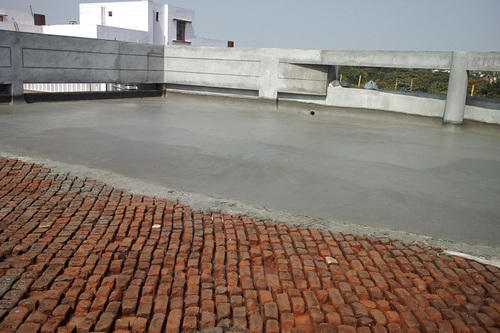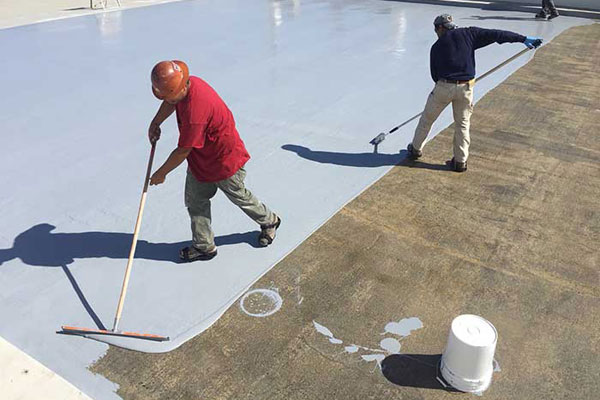Water infiltration can lead to damages such as insect infestation, mold, and in worst cases building failures. Such problems will require waterproofing to prevent mold and mildew from getting into the walls and floor. This makes waterproofing essential to structural integrity and health.
Choosing the right waterproofing system is pivotal for your project. Waterproofing has gone through an evolution and several systems have developed. We here focus on 6 most used waterproofing systems across various applications.
*Advertisement
Integral waterproofing system
Integral waterproofing is done inside the concrete. Integral waterproofing uses chemical admixtures, usually a dry powder or liquid added to the concrete mix at the batch plant or the jobsite. Some forms of integral waterproofing will even self-heal minor cracking. Integral waterproofing aims to densify the concrete to prevent water ingress and/or convert wettable capillaries to non-wettable types that would eventually lower the penetration of water into the system.
Integral waterproofing admixtures are formulated to affect the properties of the hardened concrete and not those of concrete in its plastic state. Water repellent admixtures, conventional admixtures, and air entrainers may increase the workability of the plastic mixes slightly. On the other hand, inert pore fillers or reactive pore fillers, due to their finely divided particle sizes may decrease workability slightly. These for example can be used in water storage tanks, wet areas, basements, STPs, Tunnelling Concrete, Underground structures and other similar structures.

Integral Waterproofing Additives generally function based on one or a combination of the three mechanisms listed below.
- Reduction of Capillarity by w/c ratio reduction
- Hydrophobizing Capillaries
- Physical or Chemical Pore Blocking
Brickbat Coba Waterproofing system
Roof slabs constructed either by RC or RCC need insulation for thermal comfort and waterproofing treatment to prevent leakage of water. Both these requirements are effectively fulfilled by brick bat coba treatment. All existing treatment, coatings on the roof slab top is to be removed and surface cleaned by hard wire brush and washed with water. The surface should be free from any oil, grease, dust, etc. Remedial measured by provided to all structural cracks. Expansion joints should be treated as per standard practice.
Brickbat coba is a very effective method used for waterproofing. All existing treatment, a coating on the slab top is removed and the surface cleaned by a hard wire brush and washed with water. The surface should be free from any oil, grease, dust, etc. Remedial measures must be taken to all structural cracks as per standard practice. All non-structural cracks more than 0.5 mm wide and construction joints if any should be cut in a “V” shape, cleaned with a wire brush, and washed, the cracks are then filled by polymer-modified cement or mortar using acrylic polymer, with an additional slurry mix is spread upon the cleaned roof surface.

Polymer modified bitumen waterproofing system
Polymer modified bitumen (PMB) is one of the specially designed and engineered bitumen grades that are used in making pavement, roads for heavy-duty traffic, and home roofing solutions to withstand extreme weather conditions. PMB is a normal bitumen with the added polymer, which gives it extra strength, high cohesiveness, and resistance to fatigue, stripping, and deformations, making it a favorable material for infrastructure. Pavements designed and constructed for heavy-duty traffic and extreme weather conditions require specially designed engineered Bitumen Grades. By changing the characteristics of normal bitumen with the addition of a polymer, either they are of elastomeric nature or elastomeric, we succeed to obtain bitumen that allows the mixture to be more cohesive, with much more strength and significant higher resistance to parameters like fatigue and permanent deformations for road pavements.
This type of waterproofing system withstands temperature fluctuations and high mechanical loads providing a long-term, reliable, and effective waterproofing. The polymer-modified bitumen sheet membrane provides additional flow resistance that makes it possible to use the material in a very hot climate. On the bottom side, the material is covered by a polymer film with special graphic elements, melting of which indicates the proper material heating. On the top side, the material is covered by a polymer film. Modern products are designed for installation as the bottom layer in a double-layer roofing system on buildings and constructions, for waterproofing of foundations.

PVC waterproofing membrane system
A PVC waterproofing membrane is made of high quality flexible (plasticized) polyvinyl chloride. Based on the application area there are reinforced and unreinforced membranes. Reinforced waterproofing membrane has a reinforcing base in the form of a polyester mesh or glass fiber and it is used for waterproofing of roofs. Reinforced membranes have increased durability. Unreinforced membranes are more flexible, have high tear resistance, and are used for waterproofing of underground structures, tunnels, swimming pools.
Several products have used the unique product formula, the product life has far exceeded the general waterproofing material, the entire waterproofing system life is long, the roofing surpasses for 30 years, underground surpasses for 50 years, in the construction, the civil engineering obtains the widespread application.

EPDM membrane / synthetic rubber waterproofing system
EPDM is a semi-crystalline material with ethylene-type crystal structures at higher ethylene contents, becoming essentially amorphous at ethylene contents that approach 50 wt%. Rubbers with saturated polymer backbones, such as EPDM, have much better resistance to heat, light and ozone than unsaturated rubbers such as natural rubber, SBR or polychloroprene (Neoprene). As such, EPDM can be formulated to be resistant to temperatures as high as 150°C, and, properly formulated, can be used outside for many years or decades without degradation. EPDM has good low temperature properties, with elastic properties to temperatures as low as -40°C depending on the grade and the formulation. A roll of EPDM flashing with fleece on the back, used for waterproofing roofs As with most rubbers, EPDM is always used compounded with fillers such as carbon black and calcium carbonate, with plasticizers such as paraffinic oils, and has useful rubbery properties only when crosslinked. Crosslinking mostly takes place via vulcanization with sulphur, but is also accomplished with peroxides (for better heat resistance) or with phenolic resins.
*Advertisement
As a durable elastomer, the EPDM waterproofing system is conformable, impermeable and a good insulator. Solid EPDM and expanded EPDM foam are often used for sealing and gasketing, as well as membranes and diaphragms. EPDM is often used when a component must prevent fluid flow while remaining flexible. It can also be used to provide cushioning or elasticity. While EPDM has decent tensile strength, its flexibility makes it inappropriate for rigid parts such as gears, shafts, and structural beams.

Conclusion
Take expert advice and go for the waterproofing system that is ideal for buildings and structures that are already having leakage or damage as well as for new structures to avoid leakage in the future.
Image Source: s3tasia.com, bhwaterproofing.in, ajwdistribution.com, houseunderconstruction.com, epdmroofs.org, deccanclap.com


Comments are closed.